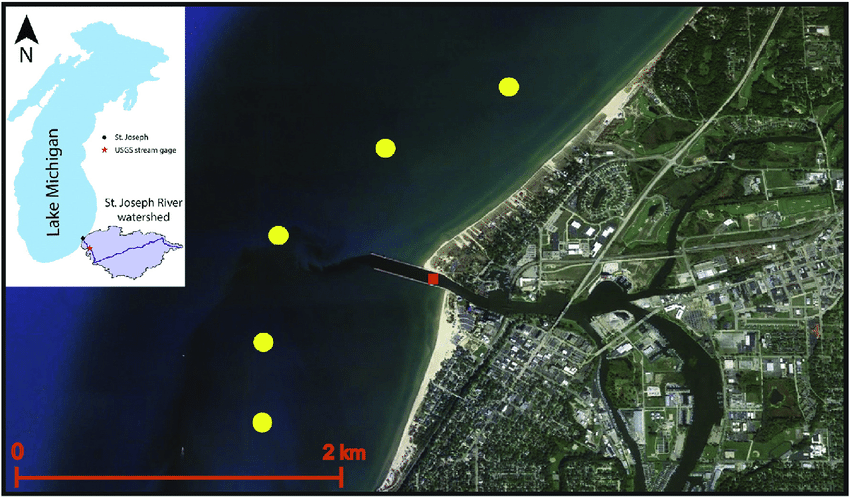Keyword: Plume biogeochemistry

Jameel, Y., S. Stein, E. Grimm, C. Roswell, A. E. Wilson, C. Troy, T. Höök, and G. Bowen. 2018. Physicochemical characteristics of a southern Lake Michigan river plume. Journal of Great Lakes Research 44:209-218.
Abstract
Riverine inputs are a major source of nutrients to the Laurentian Great Lakes and have important effects on nearshore biological processes, where mixing between river and lake water leads to formation of heterogeneous river plumes. We examined the physical and chemical characteristics of the St. Joseph River plume in southern Lake Michigan between May and October 2011, and in October 2012, June 2013 and April 2014. Specific electric conductivity and stable isotopes of water were used to quantify the fraction of river water (FRW) at sampling sites in Lake Michigan. Both tracers predicted similar patterns of FRW among sites; however, there was a systematic offset between the two methods, and specific electric conductivity method under-predicted the FRW by ∼5%. We observed a distinct, seasonally varying river plume, with plume size correlated with flow rate of St. Joseph River. Within the plume, sediments and nutrients were non-conservative and exhibited significant and seasonally varying losses that we attribute to settling of particle-bound nutrients and/or nutrients in particulate phase below the plume. The characteristics and the spatiotemporal heterogeneity of the river plume documented here may have important implications for the nearshore biogeochemistry of the Great Lakes and for understanding the roles of these features in ecological processes in nearshore areas.